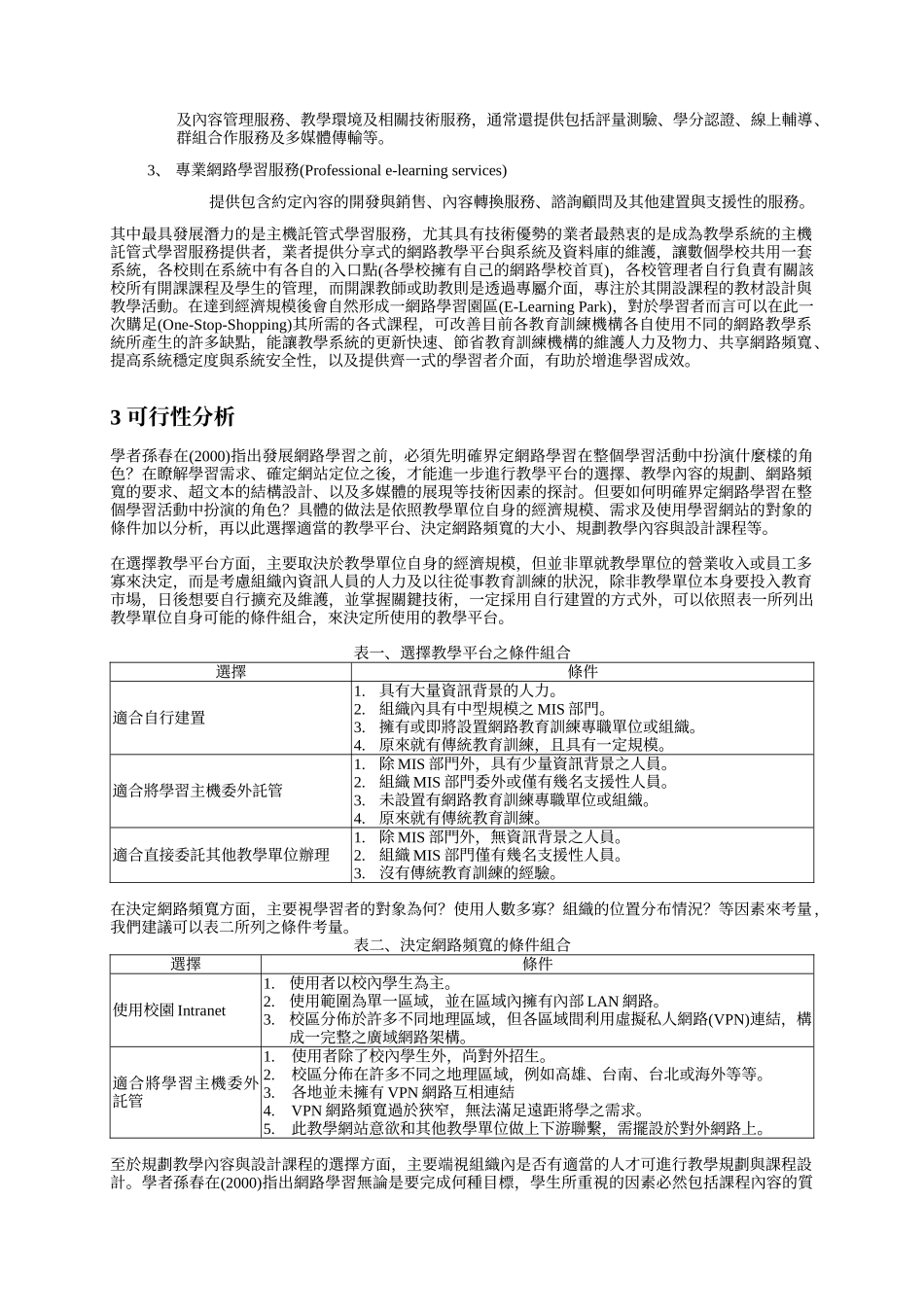許多教學單位深怕在這一波網路學習的風潮中缺席,於是以各種方式積極地導入網路教學,但往往實施過後,卻未能獲得原先預期的效益。其原因在於導入網路教學之初,並未事先做可行性分析及預期效益的評估,就貿然地投入了相當多的人力、財力及物力,結果當然效果不彰。本研究提出一套可行性分析及預期效益的評估流程,並以國立高雄餐旅學院為案例,藉以說明可行性分析及預期效益的評估過程。本研究所提之流程可提供其他欲導入網路學習的教學單位,作為參考範例之用。關鍵字:網路教學、網路學習、網路大學E-learning/e-training has been introduced enthusiastically to many education institutes that are eager to catch the wave of e-learning/e-training. But after putting it into practice, education institutes fail to get great benefits they expected. The problem is that education institutes didn’t make practicable analysis and benefit evaluation before introducing them into education institutes. Many education institutes have wasted many manpower-, financial- and material resources, and didn’t get great benefits.In this study, we proposed a procedure of practicable analysis and benefit evaluation for establishing e-learning website. We will illustrate the proposed procedure with the case study of National Kaohsiung Hospitality College. The procedure we proposed can be a reference model and help other education institutes that want to introducing e-learning/e-training.Keywords: Web-based Instruction, e-learning, Cyber University1 引言近年來蓬勃發展的網際網路已使得教育理念與實作呈現新的風貌,其具有雙向、即時互動之特性,使其在發展初期即成為隔空教育的新寵。很多的傳統學院與大學都已開始實行以網際網路為主的遠距教學,希望藉由網路媒體引進新的教學方式,達到提高學習成效的目的(Lenin et al, 1989; Hawkins, 1993; Leidner and Jarvenpaa, 1993, 1995; Turoff,1995;Alexander,1995;Wild & Omari,1996; Bollentin,1998; McClintock,1998)。不僅各級學校積極地作為輔助教學之用,就連企業界也採用作為員工訓...


